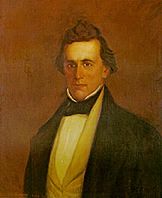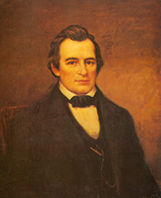United States House of Representatives elections, 1840
|
|
|||||||||||||||||||||||||
|---|---|---|---|---|---|---|---|---|---|---|---|---|---|---|---|---|---|---|---|---|---|---|---|---|---|
|
|||||||||||||||||||||||||
|
All 242 seats to the United States House of Representatives 122 seats were needed for majority |
|||||||||||||||||||||||||
|
|||||||||||||||||||||||||
|
|||||||||||||||||||||||||
Elections to the United States House of Representatives for the 27th Congress were held on different dates in each state, from July 6, 1840 (Louisiana) to November 2, 1841 (Mississippi).
The 1840–41 U.S. House elections gave the Whig Party control of the House of Representatives for the first time. The Panic of 1837 had created an economic depression and the perceived mishandling of this crisis by President Martin Van Buren, gave the Whigs the presidency (William Henry Harrison was elected) and a majority in the House. The Whigs campaigned for neo-mercantilist reform based on modernization and economic nationalism, ideas which had previously been unpopular outside of urban regions, but gained footholds because of the depression. The collapse of the Anti-Masonic Party in the late 1830s also gave the Whigs the advantage of having several incumbents turn from rivals to party members. In addition, Robert M. T. Hunter was elected as an Independent to Virginia's 9th District, and Zadoc Casey was elected as an Independent Democrat to Illinois's 2nd District.
...
Wikipedia


